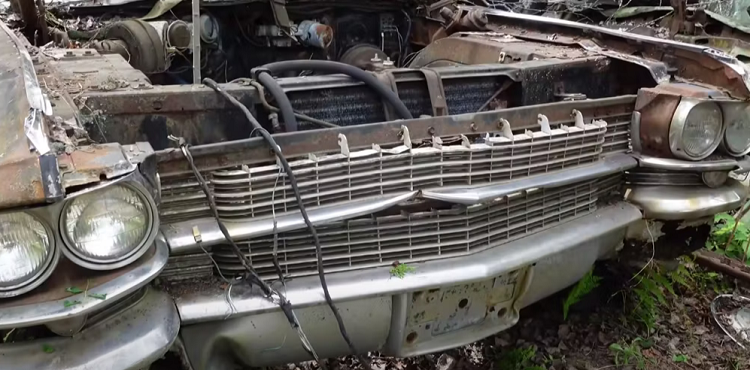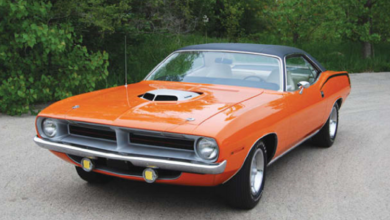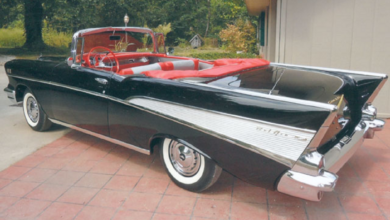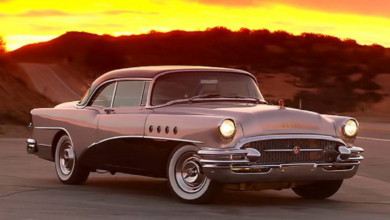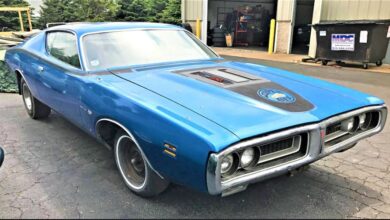Check Out This 1963 Cadillac Miller Meteor Hearse Unearthed In Ironic Graveyard Find
Some gearheads with a hankering for made-in-USA luxury automobiles might believe that a classic Cadillac is to die for. Well, to sate the appetite of those with such an obsession, here’s one Caddy originally designed to take you to your final resting place. It’s a black humor anecdote not lost on junkyard car hobbyist and Steve Magnante. “There’s a saying that goes, sooner or later, everyone gets to take a ride in a Cadillac,” he said in a video released earlier in June, while standing next to a 1963 Cadillac Miller Meteor hearse.
Unfortunately, this model’s expiry makes it ill-equipped for taking any dearly departed person to a six-feet-under destination. But like other modified Cadillac hearse models out there, this one’s got a load of cool stuff worthy of an extensive profile.
Caddy Z-Class Chassis Could Handle Heavy Loads
For an auto journalist like Magnante, this hearse might not have the novelty cachet that a custom-made Munsters replica would sport, but it still yields a backstory he can’t resist talking about. For openers, Cadillac had been a major supplier of chassis parts for ambulances and hearses dating back as far as the 1920s until the 1980s. Miller Meteor’s involvement in that specialization dates all the way back to the 19th century, when parent company A.J. Miller developed coaches for horse-drawn carriages. Fast-forward to the mid-1950s, when Miller (by now a builder of auto coaches) merged with competitor Meteor, resulting in the venture focusing on building hearses and ambulances.
Technically, Cadillac only supplied the chassis for the Miller-Meteor fleet. On the 1963 model discovered by Magnante, it featured a Z-class chassis that boasted a 13-foot wheelbase, longer than what could be found on any 75-Series Caddy stretch limousines at the time. The Z-class was one monster of a chassis, capable of hauling particularly heavy loads. And since Cadillac didn’t build station wagons until much later, these Cadillac Miller Meteors could easily be adapted into more family-oriented utility vehicles at the end of their design lifetimes as ambulances or hearses.
Gesturing towards an empty engine bay that currently facilitates a growing tree and other foliage, Magnante pointed out that this 1963 model would have had a 390 cubic-inch motor, the last time this hearse model would feature a power source that size. The following year, the fleet had switched to 429 engines. But this particular model was ahead of its time in that it featured a dual master cylinder as part of its brake system, four years before the federal government made them mandatory.
Grille Intact With Original T3 Lamps
Stepping in front of the car, Magnante was astounded over one item that hasn’t been removed. “The grille on this thing surprisingly has not been taken by a ’50s bar and grill for a wall hanging,” he said. Save for a large dent in the middle, the grille is still in one piece, an aluminum and steel component that he estimated weighs at least 200 lbs.
He’s also taken by the presence of all four headlamps, not one of them smashed after years of neglect. It’s a considerable find given the rarity of these lights, once manufactured by Guide, an Ohio-based major parts supplier for GM. As for the T3 identifier, Magnate pointed out it simply meant that the driver could tilt the lights downward and towards the right to maximize their alignment. While they were reproduced for a few years since 1963, folks looking for original replacements had to search out old vehicles outfitted with them as far back as 1955.
Magnante also pointed out other parts that identified the hearse as a commercial vehicle, namely Cadillac’s boxed frame with coil springs and sway bar in the front. The car was also outfitted with drum brakes, since disc brakes on Cadillacs weren’t a reality until four years later. At the back, the frame included rear roof supports shaped like dog legs, the last time they’d appear on a Cadillac Miller meteor product. Those supports would become more angular in subsequent models.
This Hearse Provided A Smooth Ride
Like most Cadillacs, this hearse model was also recognized for providing a smooth ride for both its living and deceased occupants. The longer wheelbase had something to do with that, but according to Magnante, the real difference was in the presence of rear leaf springs, Delco spiral shock absorbers, and double U-joints as opposed to the universal joints used on vehicles back in the day.
But what made these vehicles a rarity was that Cadillac had built roughly 163,000 cars back in 1963, but only about 2,500 commercial chassis, some of them destined for Miller Meteor to create hearses. Several years of service later, they were eventually relegated to auto graveyards like the one Magnante discovered. “This one’s life cycle is pretty much over.”
